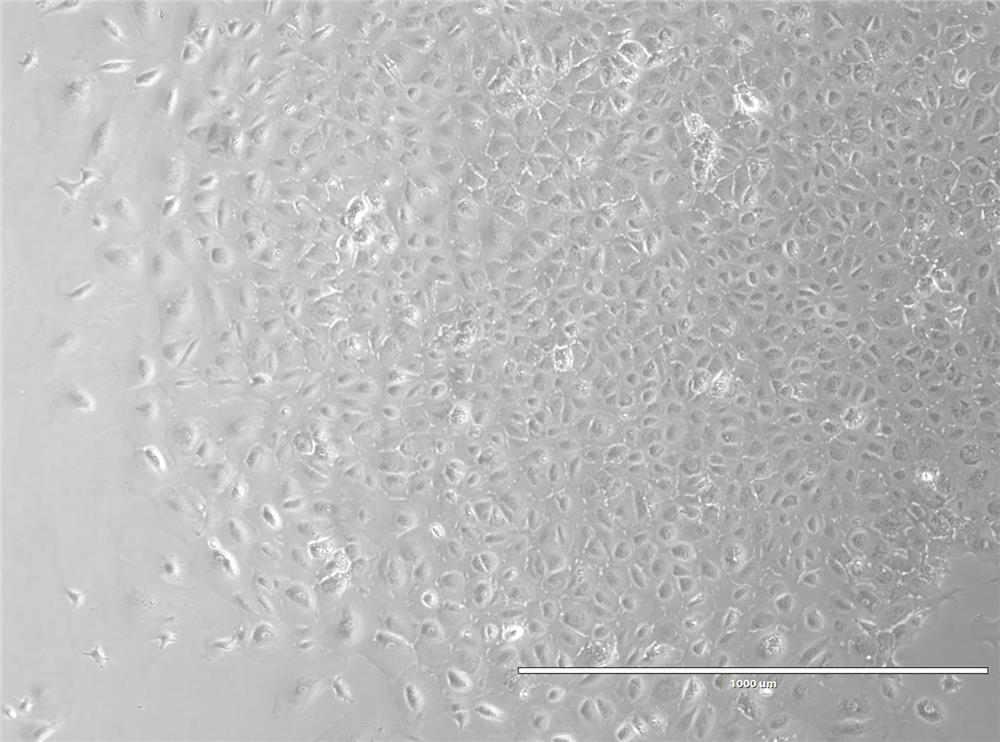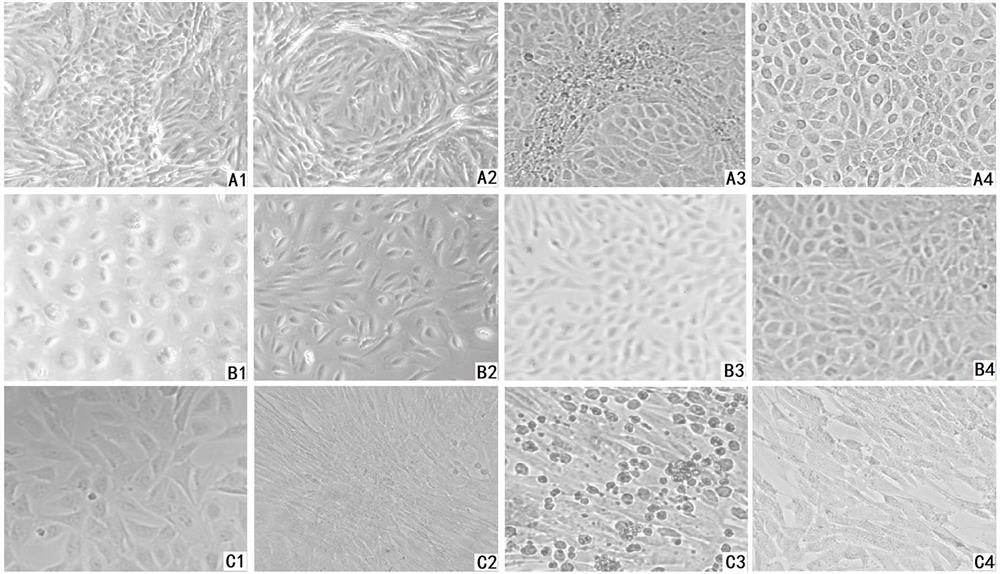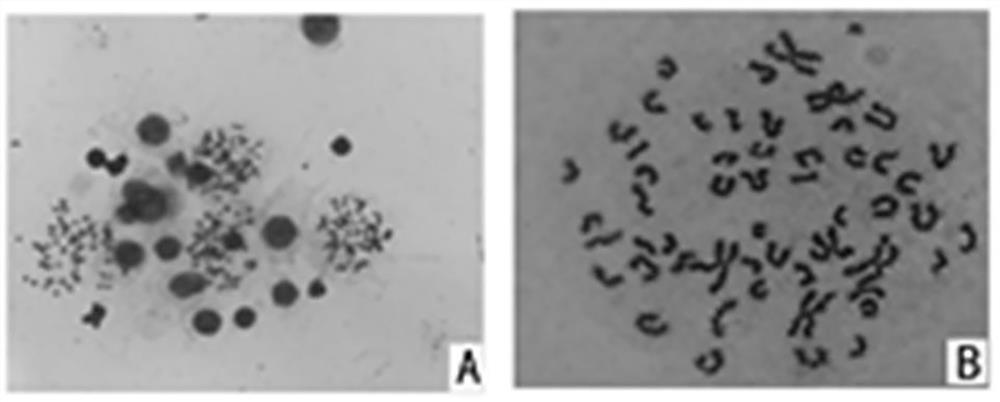Lamb sheep sustentacular cells as well as separation method and application thereof
A technology of testicular Sertoli cells and separation methods, applied in the separation method and application of the cells, in the field of lamb testicular Sertoli cells, can solve the problems of difficult consistency between batches, less neutralizing antibodies, and small production volumes within batches, etc. Achieve the effects of saving time for sorting, reducing production costs, and increasing the number of splits
- Summary
- Abstract
- Description
- Claims
- Application Information
AI Technical Summary
Problems solved by technology
Method used
Image
Examples
Embodiment 1
[0029] Separation and optimization of Sertoli cells of lamb testis
[0030] Routinely aseptically take out the lamb testis, carefully remove the outer membrane, wash with pH 7.0, 0.05M PBS buffer several times, cut into pieces aseptically, first digest with 0.25% trypsin at 37°C for 2 hours, and then digest with type IV collagenase 0.5-1h, add 1% serum to stop the digestion, centrifuge at 1000rpm for 15min, resuspend the pellet with digestion solution containing 0.05% trypsin and 0.02% EDTA, incubate the resuspension at 37°C for 10-30min to disperse the cells and filter, then use the filtrate in sequence Filter with one, two, or four layers of gauze to remove large pieces of undigested tissue and non-cellular components. The digestion step is very critical. If the digestion time is too short, the tissues and cells cannot be digested. If the time is too long, the cell membrane structure will be destroyed, and then 100 Mesh, 200 mesh copper mesh filter, the filtrate was centrifu...
Embodiment 2
[0034] Immortalization and screening of SCST cells
[0035] As described in Example 1, although SCST cells can increase the number of passages, the culture of SCST cells requires imported fetal bovine serum, which is expensive and limited in generation, and cannot be used for large-scale production. Therefore, the SCST cells were transfected with the telomerase gene (SCST-D for short) to make them immortalized and can be permanently passaged. Instead, use low-concentration (200ug / ml) G418 to screen first, so that untransfected fragile cells are purified first, and then use G418 (200ug / ml) medium to subseed after the cells are full, so that The fragile cells after transfection were also purified. After a long period of culture, a very small number of cells with strong vitality divided and proliferated to form several clone islands, and then were screened for resistance with high concentration (400 ug / ml) G418. This time, Most of the cells were killed again, and then after a lo...
Embodiment 3
[0037] Karyotype and Chromosome Identification of Subcloned Cells
[0038] According to the conventional karyotype experiment, 0.5-0.7ug / ml colchicine was used to make the subcloned cells in Example 2 be in metaphase, then fixed with glacial acetic acid, and Giemsa stained. The results show that the subcloned cells of the present invention are normal somatic cells, without any aberration of chromosome number and structure, showing safety such as anchorage dependence and contact inhibition, 2n=54 (see image 3 ), it can be seen that its genetic traits have not changed after immortalization.
PUM
 Login to View More
Login to View More Abstract
Description
Claims
Application Information
 Login to View More
Login to View More - R&D
- Intellectual Property
- Life Sciences
- Materials
- Tech Scout
- Unparalleled Data Quality
- Higher Quality Content
- 60% Fewer Hallucinations
Browse by: Latest US Patents, China's latest patents, Technical Efficacy Thesaurus, Application Domain, Technology Topic, Popular Technical Reports.
© 2025 PatSnap. All rights reserved.Legal|Privacy policy|Modern Slavery Act Transparency Statement|Sitemap|About US| Contact US: help@patsnap.com



